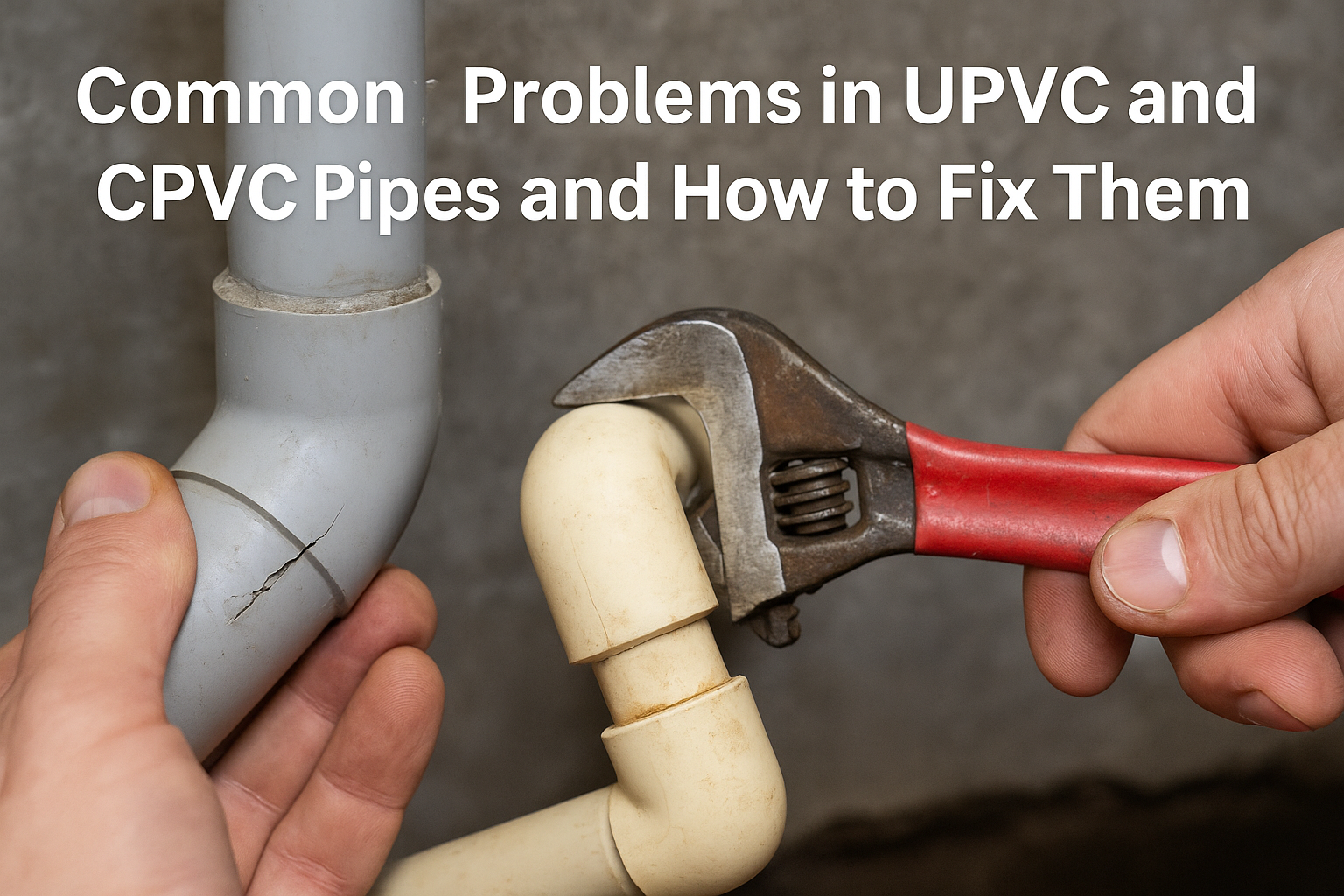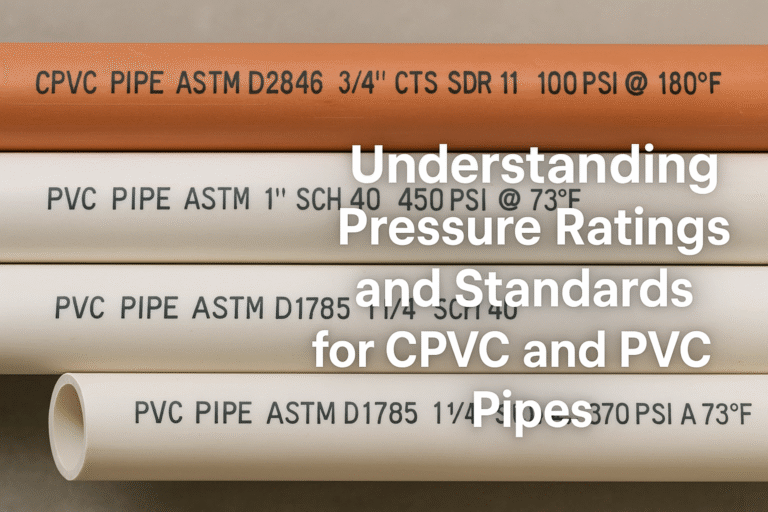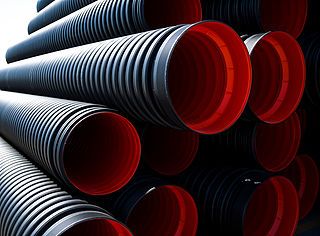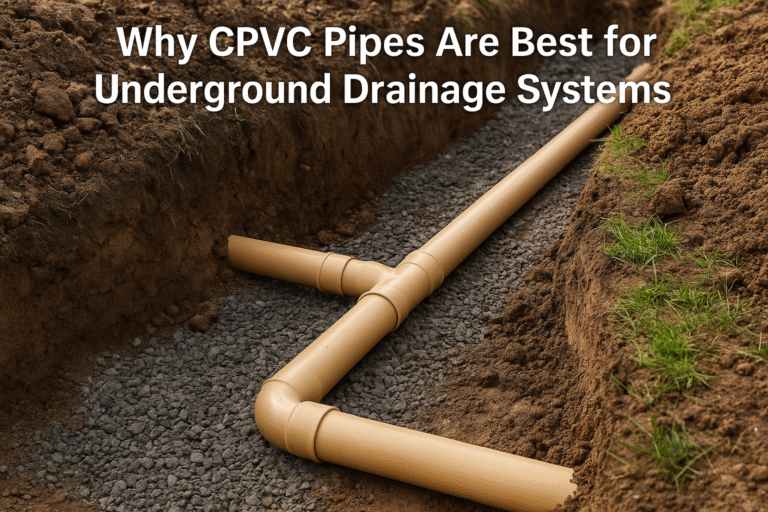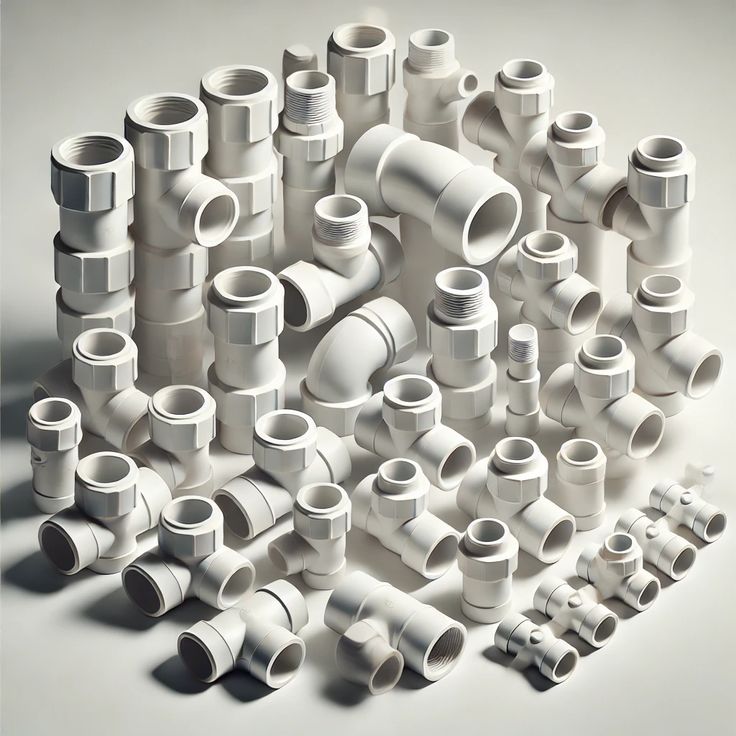UPVC and CPVC Pipes: Fix Common Plumbing Issues Fast
When it comes to modern plumbing, both UPVC and CPVC pipes are widely used across residential, commercial, and industrial applications. However, even the most reliable systems may face certain challenges over time. Understanding these issues and knowing how to address them helps maintain long-term durability and efficiency. This guide explains the most common problems encountered with UPVC and CPVC pipes, and how leading Top Manufacturers of Pipe Fittings in India like Austro Pipes address these issues with quality products and solutions.
CPVC vs UPVC Pipes: A Quick Understanding
Both UPVC (Unplasticized Polyvinyl Chloride) and CPVC (Chlorinated Polyvinyl Chloride) pipes are highly valued for their strength, corrosion resistance, and long service life. However, they have different characteristics that influence where they’re used.
UPVC Pipes:
- Primarily used for cold water supply, drainage, and electrical conduit.
- High rigidity and excellent chemical resistance.
- Less flexible due to lack of plasticizers.
CPVC Pipes:
- Suitable for both hot and cold water supply.
- Can handle higher temperatures (up to 93°C).
- Greater flexibility compared to UPVC.
Understanding these distinctions helps determine the right pipe system for specific applications.
Common Problems Found in UPVC and CPVC Pipes
1. Cracking and Brittleness
One of the most frequent issues in CPVC vs UPVC Pipes is surface cracking or brittleness over time.
Causes:
- Prolonged exposure to UV light (especially in outdoor installations).
- Excessive mechanical stress or improper handling during installation.
- Extreme temperature fluctuations.
Solution:
Choose UV-resistant pipes from reputed manufacturers like Austro Pipes. Proper insulation and professional installation can also reduce mechanical strain.
2. Joint Leakage
Leaks at joints often occur due to improper gluing or poor installation techniques.
Causes:
- Inadequate surface preparation before solvent welding.
- Use of low-quality solvent cement.
- Incorrect alignment of fittings.
Solution:
Ensure correct solvent cement is used, surfaces are cleaned thoroughly, and joints are properly aligned during installation. Austro Pipes supplies high-quality fittings designed for secure connections.
3. Chemical Degradation
Certain aggressive chemicals can slowly degrade the pipe’s integrity, especially in industrial applications.
Causes:
- Exposure to incompatible substances such as strong acids or solvents.
- Incorrect pipe material selection for industrial chemicals.
Solution:
Perform a proper PVC vs CPVC chemical compatibility check before pipe selection. CPVC generally handles a wider range of chemicals, making it preferable for industrial uses.
4. Water Hammer Effect
Sudden shutting of valves can cause a water hammer effect, leading to vibrations and stress on pipe joints.
Causes:
- Rapid changes in water flow.
- Poorly designed pipeline layout.
Solution:
Install air chambers or water hammer arrestors and design pipelines with gradual flow control to reduce pressure spikes.
5. Discoloration and Staining
Over time, both CPVC and UPVC pipes may experience discoloration.
Causes:
- Continuous UV exposure.
- High chlorine content in water.
Solution:
Use UV-stabilized pipes for outdoor applications. For indoor use, discoloration is usually cosmetic and doesn’t affect performance.
6. Temperature-Related Deformation
While UPVC performs well under ambient conditions, CPVC and PVC are better for high-temperature environments.
Causes:
- Using UPVC for hot water supply.
- Improper pipe selection based on temperature ratings.
Solution:
Use CPVC pipes for hot water lines. Reliable CPVC Pipes Manufacturers like Austro Pipes provide temperature-resistant products.
7. Fitting Compatibility Issues
Using incompatible fittings can lead to joint failures.
Causes:
- Mixing UPVC and CPVC fittings without proper adapters.
- Using fittings from different manufacturers with slight size variations.
Solution:
Always source both pipes and fittings from the same Pipes Manufacturer like Austro Pipes to ensure proper fit and compatibility.
8. Microbial Growth Inside Pipes
While rare, biofilm formation inside pipes can affect water quality.
Causes:
- Long-term stagnant water.
- Contaminated water sources.
Solution:
Ensure regular water circulation and proper disinfection methods. CPVC offers superior microbial resistance compared to some other pipe materials.
9. Crushed Underground Pipes
Underground Drainage Pipe networks can sometimes collapse due to soil pressure or improper installation.
Causes:
- Insufficient bedding or poor backfilling.
- Use of low-quality pipes not designed for underground use.
Solution:
Select pipes with higher impact strength, like those offered by Austro Pipes, which are specifically designed for underground applications.
10. Difficulty in Repair and Replacement
Repairs can become challenging when pipes are embedded in walls or underground.
Solution:
Professional installation with accessible cleanouts and inspection chambers can minimize future repair efforts.
How Reliable Manufacturers Like Austro Pipes Address These Challenges
Choosing quality products from experienced Pipes Manufacturers like Austro Pipes ensures that many of these problems are minimized from the start. Here’s how Austro Pipes stands out:
- Offers pipes with superior chemical resistance.
- Supplies UV-stabilized and pressure-tested products.
- Provides full technical support for installation guidance.
- Manufactures fittings with precise tolerances for leak-free connections.
- Ensures compliance with international quality standards.
When investing in plumbing infrastructure, relying on Top Manufacturers of Pipe Fittings in India reduces long-term costs and guarantees peace of mind.
Choosing Between CPVC and UPVC Pipes
Feature | CPVC Pipes | UPVC Pipes |
Temperature Resistance | Up to 93°C | Up to 60°C |
Application | Hot & Cold Water | Cold Water, Drainage |
Flexibility | More Flexible | Rigid |
Chemical Resistance | Excellent | Very Good |
UV Resistance | Requires stabilization | Good for indoor |
By understanding the Difference CPVC and UPVC, project planners can make better-informed decisions.
FAQs
Are CPVC pipes better than UPVC for hot water?
Yes. CPVC pipes can handle hot water up to 93°C, making them ideal for hot water supply lines, while UPVC is limited to cold water applications.
Can CPVC and UPVC pipes be joined together?
Yes, but proper adapters must be used. Direct joining without suitable transition fittings may cause leaks or joint failures.
Why do UPVC pipes turn yellow over time?
This is mainly due to UV exposure and chlorine in the water. While it affects appearance, it usually doesn’t compromise performance if quality pipes are used.
How long do CPVC and UPVC pipes last?
With proper installation and maintenance, both can last 25 to 50 years, depending on environmental conditions and usage.
Are CPVC pipes suitable for underground installation?
Yes, CPVC pipes can be used underground if properly buried and protected from heavy soil loads with suitable bedding.
Can water hammer damage CPVC or UPVC pipes?
Yes, frequent water hammer effects can weaken joints over time. Using water hammer arrestors and controlled valves helps prevent this.
How do I avoid joint leakage in CPVC pipes?
Use high-quality solvent cement, clean the joint surfaces properly, and allow adequate curing time after installation.
Are pipes from Austro Pipes ISI certified?
Yes. Austro Pipes follows strict ISI and ASTM standards, ensuring high-quality production that meets all Indian and international norms.
Can microbial growth occur inside CPVC pipes?
It’s rare, but possible in stagnant water systems. Regular water flow and periodic disinfection prevent microbial issues.
Is there any maintenance required for UPVC and CPVC pipes?
Minimal maintenance is needed. Regular inspections, prompt repairs, and avoiding extreme conditions will help maximize service life.

